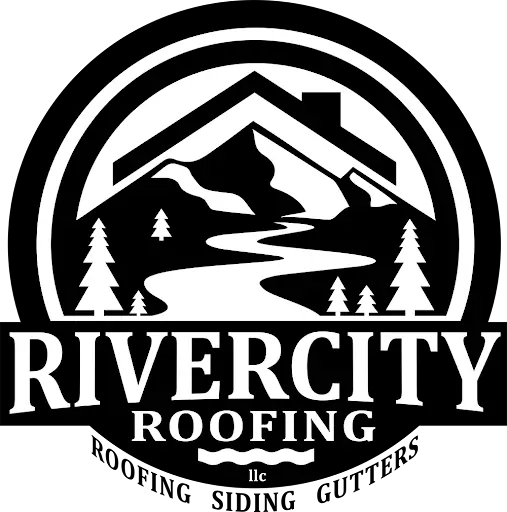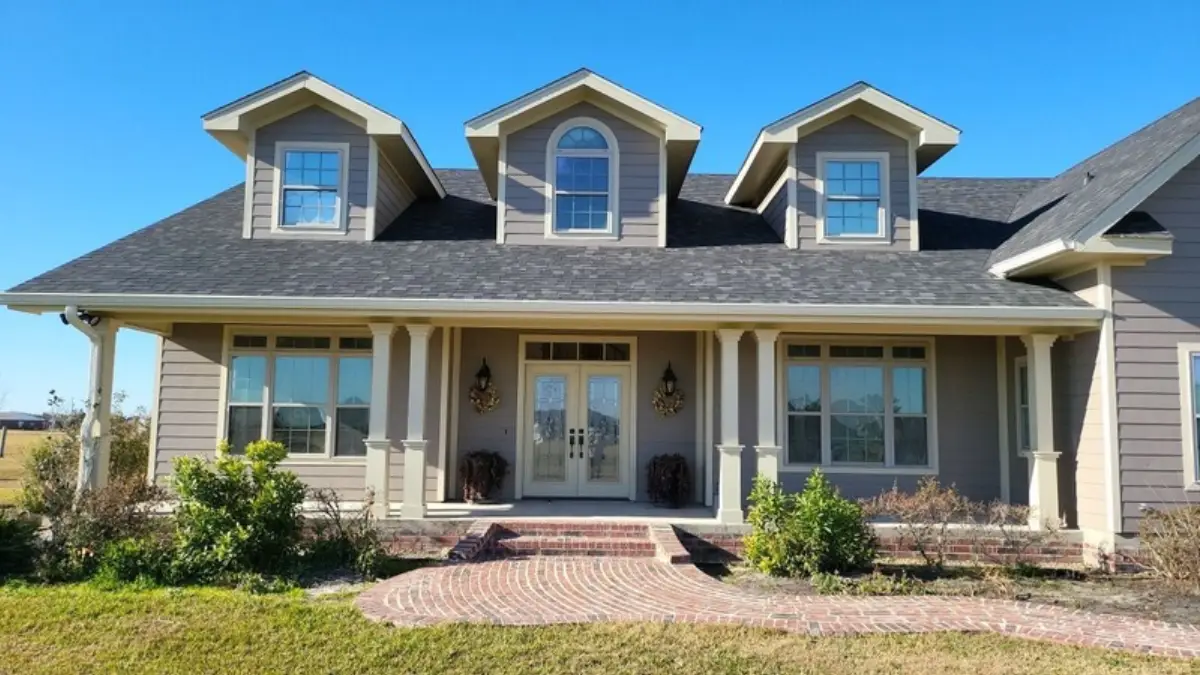Choosing the right roof for a home is a crucial decision that impacts both esthetics and functionality. The various types of residential roofs available today offer homeowners a wide array of options to suit their specific needs and preferences. We at River City Roofing, having 20+ years of experience, understand the importance of selecting the perfect roof for your home.
From traditional shingles to modern flat roofs, the different types of residential roofing systems can make a big difference in a home’s appearance, energy efficiency, and durability. This guide explores the most common types of roofs for homes, including residential roof shingles types and flat roof types for residential buildings. By understanding these options, homeowners can make an informed choice that balances style, practicality, and long-term value.
Understanding Roof Structures
Residential roofs come in various structures, each with its unique characteristics and benefits. The three most common types of residential roofing systems are gable roofs, hip roofs, and flat roofs. Understanding these structures helps homeowners make informed decisions about their roofing needs.
Gable Roofs
Gable roofs are perhaps the most recognizable roof structure. They feature two sloping sides that meet at a ridge, forming a triangle-shaped end known as a gable. This design is popular in cold climates, particularly in New England and eastern Canada. Gable roofs offer several advantages:
- They provide ample attic space and allow for vaulted ceilings.
- The simple design makes them easier and less expensive to build than more complex roof structures.
- They effectively shed water and snow due to their sloped sides.
However, gable roofs may not perform as well in high-wind areas compared to other roof types.
Hip Roofs
Hip roofs have slopes on all four sides that meet at a ridge or a single point at the top. This design offers several benefits:
- They are more stable than gable roofs, making them a better choice for areas with high winds or hurricanes.
- The inward slope of all four sides makes them more durable and less prone to damage.
- They provide additional living space through the use of dormers or crow’s nests.
On the downside, hip roofs are more complex to construct and typically more expensive than gable roofs. They also have less attic space due to their design.
Flat Roofs
Despite their name, flat roofs have a slight pitch to allow for water drainage. They are common in modern and mid-century architectural styles. Flat roofs offer unique advantages:
- They are more affordable to install and maintain.
- They provide additional outdoor living space, perfect for rooftop gardens or solar panel installations.
- They are easier to inspect and maintain due to their accessibility.
However, flat roofs have some drawbacks. They may not drain as efficiently as sloped roofs, potentially leading to water pooling. They also tend to absorb more heat, which can affect the home’s energy efficiency.
Understanding these roof structures helps homeowners choose the best option for their climate, architectural style, and personal preferences. Each type has its pros and cons, and the right choice depends on various factors specific to each home and location.
Popular Roofing Materials
Asphalt Shingles
Asphalt shingles remain the most popular choice for American homes. They come in various types, each offering different benefits:
- Basic asphalt shingles: These are the most affordable option, lasting 15-20 years.
- Architectural asphalt shingles: Thicker and sturdier, they last about 30 years and withstand severe weather better.
- Composite shingles: Made of asphalt, fiberglass, and recycled materials, these can last up to 50 years and often mimic the look of wood or other materials.
Asphalt shingles are easy to install and repair, making them a cost-effective choice. They also offer a higher resale value compared to some other roofing materials.
Metal Roofing
Metal roofs have gained popularity due to their durability and eco-friendly nature. They come in various forms:
- Corrugated sheets: The least expensive option, held together with exposed fasteners.
- Flat sheets: Can be applied flat or shaped into domes or curves.
- Shingles: Resemble asphalt shingles but offer greater durability.
- Standing-seam panels: Provide the best defense against extreme weather.
Metal roofs can last 40-80 years and are available in materials like aluminum, copper, galvalume, and zinc. While more expensive initially, they offer long-term value through energy efficiency and minimal maintenance.
Tile and Slate
Tile and slate roofs are known for their longevity and esthetic appeal:
- Clay tiles: Waterproof, durable, and fireproof, they can last for centuries.
- Concrete tiles: Perform similarly to clay but are less expensive.
- Slate: Offers a natural, elegant look and can last over 100 years.
These materials are heavier and may require additional structural support. While more expensive upfront, their durability and low maintenance needs make them a worthwhile investment for many homeowners.
Eco-Friendly Roofing Options
As homeowners become more environmentally conscious, eco-friendly roofing options have gained popularity. These innovative solutions not only reduce environmental impact but also offer numerous benefits for homeowners. Let’s explore three eco-friendly roofing options that are making waves in the industry.
Green Roofs
Green roofs, also known as living roofs, transform the tops of buildings into thriving gardens. These unique roofing systems offer a range of benefits:
- Rainwater management: Green roofs absorb and filter rainwater, reducing runoff and easing the strain on sewage systems.
- Temperature regulation: By absorbing sunlight and providing natural insulation, green roofs help regulate indoor temperatures, reducing energy costs.
- Biodiversity promotion: They create habitats for birds, butterflies, and insects, especially in urban environments.
- Sound insulation: Green roofs act as a sound barrier, providing a quieter environment both inside and outside the building.
While green roofs may require more maintenance and initial investment, they can significantly enhance a building’s energy efficiency and lifespan.
Solar Tiles
Solar tiles, also called solar shingles, offer a sleek alternative to traditional solar panels. These innovative roofing materials seamlessly blend with existing roof structures while generating clean energy. Key features include:
- Esthetic appeal: Solar tiles maintain a home’s visual appeal while providing renewable energy.
- Space optimization: They can be installed in hard-to-reach areas where traditional panels might be impractical.
- Durability: Built to withstand harsh weather conditions, solar tiles offer protection similar to traditional roofing materials.
Although initially more expensive than conventional options, solar tiles can significantly reduce electricity bills and may increase property value.
Cool Roofs
Cool roofs are designed to reflect more sunlight and absorb less heat than standard roofs. They come in various forms, including reflective coatings, shingles, and membranes. Benefits of cool roofs include:
- Energy savings: By reducing heat absorption, cool roofs can lower cooling costs by 10-30% in hot climates.
- Urban heat island mitigation: Cool roofs help reduce ambient temperatures in urban areas, improving overall air quality.
- Extended roof lifespan: By minimizing heat absorption, cool roofs experience less thermal stress and may last longer than conventional roofs.
Cool roofs are often cost-competitive with traditional roofing materials, making them an accessible eco-friendly option for many homeowners.
Conclusion
Choosing the right roof for your home involves careful consideration of various factors, including climate, budget, and personal preferences. From traditional asphalt shingles to innovative eco-friendly options like green roofs and solar tiles, each roofing material has its own set of advantages and drawbacks. Understanding these differences allows homeowners to make informed decisions that balance esthetics, durability, and long-term value.
Ultimately, the best roof for your home depends on your unique circumstances and goals. Whether you prioritize energy efficiency, environmental impact, or classic style, there’s a roofing solution to meet your needs. By weighing the pros and cons of each option and consulting with roofing professionals, you can select a roof that not only protects your home but also enhances its overall appeal and functionality for years to come.
FAQs
What is the ideal type of roof for a residential building?
Asphalt shingle roofs are the most affordable, while clay tile, natural slate, and solar shingles are the bigger investments for homeowners that offer many benefits.
Which roofing material offers the highest reliability?
Slate roofing is renowned for its reliability, with a lifespan ranging from 50 to 200 years. It is fire-resistant and can withstand wind, hail, debris, and severe temperature fluctuations.
Which roofing material has the longest lifespan?
According to the National Association of Home Builders (NAHB), slate roofs have the longest lifespan, potentially exceeding 150 years. Clay and concrete roofs are also highly durable, with lifespans around 100 years.
What type of roof is most energy-efficient?
Metal roofs are exceptionally energy-efficient, making them a top choice for residential homes. They can last over 50 years and require minimal maintenance. Their high reflectivity is the reason they feel very hot when touched.



Comments are closed